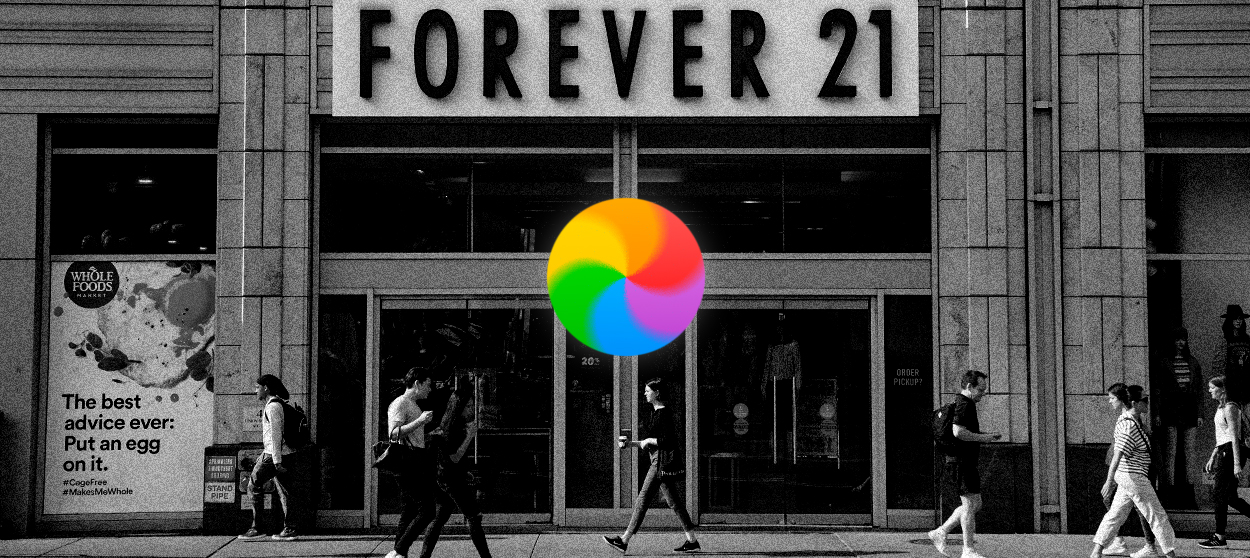Why Forever 21 stands out in the retail apocalypse
And why they might still have a fighting chance to survive


Stories of the "retail apocalypse" have become a standard fixture in business reporting in recent years, as one major chain after another has filed for bankruptcy. Most of the time, the effects of the internet, competition, and bad business decisions get the headlines. What's frustrating is what these stories so often leave out: the role of private equity. The fact that these retailers were bought up by major Wall Street players, loaded up with debt, and then slowly bled for cash, goes unmentioned — or is consigned to the tenth paragraph.
In that sense, the demise of Forever 21 stands out precisely because it is an example of how those other factors can overturn a once-thriving business.
Retailers have been dropping like flies in recent years, with well-known chains like Sears and Toys 'R' Us as some of the most prominent examples. Gymboree, Nine West, Payless ShoeSource, and Mattress Firm have all recently folded. Fashion chains like Claire's, Charlotte Russe, and PacSun — that focus on affordability and hipness, and thus constitute Forever 21's most immediate competitors — have filed for bankruptcy. This year has already seen 8,200 individual store closings in the U.S., up from 2018's death toll of 5,589. And private equity has often played a critical part: "Many retailers have run into trouble after being purchased by private equity firms or hedge funds, which piled on debt," CNN reported. "Forever 21, by contrast, is still owned by its founders."
The Week
Escape your echo chamber. Get the facts behind the news, plus analysis from multiple perspectives.

Sign up for The Week's Free Newsletters
From our morning news briefing to a weekly Good News Newsletter, get the best of The Week delivered directly to your inbox.
From our morning news briefing to a weekly Good News Newsletter, get the best of The Week delivered directly to your inbox.
Those founders are Do Won and Jin Sook Chang, a couple who immigrated to California from South Korean, and started Forever 21 as a single storefront in Los Angeles back in 1984. The company filed for Chapter 11 bankruptcy on Sunday, which is more of a "corporate reset button," as Vox described it. The aim is for Forever 21 to still be around after the bankruptcy process concludes, just in a different and smaller form. The company has secured $275 million from its already-existing lenders through JPMorgan Chase, another $75 million worth of fresh capital from TPG Sixth Street Partners, as well as some other financing to tide it over during the restructuring. While the privately-owned company's finances remain somewhat obscure, we do know from its bankruptcy filings that both its liabilities and its assets are in the $1-to-$10 billion range. That doesn't mean too much debt wasn't a problem for the company. But it does suggest how a company might be able to escape a wildly disproportionate debt load if it also avoids private equity's clutches.
Private equity strategies generally involve a "heads we win, tails you lose" relationship with the companies they buy out. Even if they run the company into the ground, which they often do, the private equity companies can still walk away with the millions or billions they extracted in fees and such along the way.
For example, after being bought by a trio of private equity companies in 2004, Toys 'R' Us' debt burden rose from $2.3 billion to $5.2 billion in 2017, while its cash stockpile shrank from $2.2 billion to $301 million. Sears owed about $5.6 billion in debt when it went under. In these instances, and others like them, the private equity companies that buy up these retailers are also often either the creditors that lend the debt or the facilitators of the transaction. They either benefit from the debt obligations payments, or from fees for their services. In Sears' case, the hedge funder that bought the company even had it sell off $3 billion worth of physical property to another fund he also benefited from.
By contrast, Forever 21's story appears much more mundane. The company focused on affordable prices and designs that kept up with the latest styles. It also expanded at an extraordinarily fast clip in the early 2000s: "We went from seven countries to 47 countries within a less-than-six-year time frame and with that came a lot of complexity," Linda Chang, daughter to Forever 21's founders and the chain's executive vice president, told The New York Times. Combined with a focus on large and elaborate retail spaces, that growth arguably left the company over-extended when internet commerce began in earnest. Online sales currently account for 16 percent of Forever 21's sales, and between 2016 and 2018 its annual revenue fell from $4.4 billion to $3.3 billion.
A free daily email with the biggest news stories of the day – and the best features from TheWeek.com
"The retail industry is obviously changing — there has been a softening of mall traffic and sales are shifting more to online," Chang admitted.
The tectonic shifts that came with America's rising inequality also played a major role. Department stores like Forever 21 rely on a customer base that's middle class, well-paid, and geographically dispersed. But then came deindustrialization, trade shocks, the end of unions, and the larger failures of macroeconomic policymaking that gave us the Great Recession, and its interminable and grinding recovery. That's led to much more regional inequality, and geographic concentration of high incomes in cities. Meanwhile, the more dispersed consumers that department chains and traditional malls relied on have seen their wages stagnate, their jobs vanish, and their buying power collapse.
Is there any hope for Forever 21?
Maybe. Once the bankruptcy is over, the company plans for a few hundred stores to remain open in the U.S., along with some presence in Latin America. There's also at least some evidence that cultural shifts are driving some younger shoppers away from the internet and back towards physical stores.
That still may not be enough, but if it is it'll be because the company still has what Sears and company did not — owners whose primary incentive is to save the business rather than scrap it for parts.
Want more essential commentary and analysis like this delivered straight to your inbox? Sign up for The Week's "Today's best articles" newsletter here.
Jeff Spross was the economics and business correspondent at TheWeek.com. He was previously a reporter at ThinkProgress.
-
 ‘Care fractures after birth’
‘Care fractures after birth’instant opinion Opinion, comment and editorials of the day
-
 Shots fired in the US-EU war over digital censorship
Shots fired in the US-EU war over digital censorshipIN THE SPOTLIGHT The Trump administration risks opening a dangerous new front in the battle of real-world consequences for online action
-
 What will the US economy look like in 2026?
What will the US economy look like in 2026?Today’s Big Question Wall Street is bullish, but uncertain
